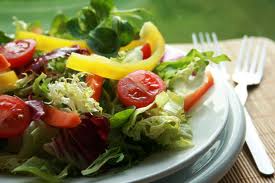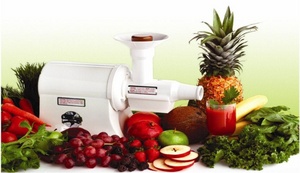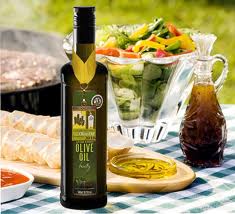[youtube=http://www.youtube.com/watch?v=e_oLHSOBxhM]
Heal Yourself With Sunlight
by Andreas Moritz
The time when one’s immediate natural impulse on the first sunny spring day was to get outside and enjoy it is long gone. Only the very courageous or “careless” who defy the grim warnings from medical mandarins and cancer specialists, wholeheartedly endorsed by the sunscreen industry, dare to venture forth into the “dangerous” sun. Unless they are covered head to toe with sun protection factor (SPF) 60, they gamble with their lives, or so they are made to believe, by those who serve their own vested interests. Fortunately, this view is beginning to crumble in the blatant absence of scientific proof that sunlight causes disease. What is being discovered instead is that lack of sun exposure is one of the greatest risk factors for disease. Very few people know that not getting enough sun kills 50,000 people from cancer deaths every year in the US alone. As shown later, these are deaths that are easily preventable through the Vitamin D produced by the body in response to regular sun exposure.
Unfortunately, it is the ultraviolet portion of sunlight that is the most easily eliminated by windows, houses, spectacles, sunglasses, sun lotions, and clothing. Before antibiotic drugs were discovered in the 1930s — penicillin having been the first one — the healing power of sunlight was favored by the medical community, at least in Europe. Sunlight therapy, called heliotherapy, was indeed considered to be the most successful treatment for infectious diseases from the late 19th to the mid-20th century. Studies revealed that exposing patients to controlled amounts of sunlight dramatically lowered elevated blood pressure (up to 40 mm Hg drop), decreased cholesterol in the bloodstream, lowered abnormally high blood sugar in diabetics, and increased the number of white blood cells, which people need to help resist disease. Patients suffering from gout, rheumatoid arthritis, colitis, arteriosclerosis, anemia, cystitis, eczema, acne, psoriasis, herpes, lupus, sciatica, kidney problems, asthma, and even burns, have all received great benefits from the healing rays of the sun.
The medical doctor and author, Dr. Auguste Rollier, was the most famous heliotherapist of his day. At his peak, he operated 36 clinics with over 1,000 beds in Leysin, Switzerland. His clinics were situated 5,000 feet above sea level, the high altitude allowing his patients to catch a lot more UV light than was possible at the lower levels of the atmosphere. Dr. Rollier used the UV rays of sunlight to treat diseases such as tuberculosis (TB), rickets, smallpox, lupus vulgaris (skin tuberculosis), and wounds. He followed in the footsteps of Danish physician Dr. Niels Finsen, who won a Nobel Prize in 1903 for his treatment of TB using ultraviolet light. Rollier found that sunbathing early in the morning, in conjunction with a nutritious diet, produced the best effects.
The miraculous complete cures of tuberculosis and other diseases facilitated by these doctors made headlines at the time. What surprised the medical community most was the fact that the sun’s healing rays remained ineffective if the patients wore sunglasses. [Sunglasses block out important rays of the light spectrum which the body requires for essential biological functions.] Note: your eyes receive these rays even if you are in the shade.
By the year 1933, there were over 165 different diseases for which sunlight proved to be a beneficial treatment. However, with the death of Rollier in 1954 and the growing power of the pharmaceutical industry, heliotherapy fell into disuse. By the 1960s, man-made “miracle drugs” had replaced medicine’s fascination with the sun’s healing powers, and by the 1980s the public was increasingly being bombarded with warnings about sunbathing and the risks of skin cancer.
Today, the sun is considered the main culprit for causing skin cancer, certain cataracts leading to blindness, and aging of the skin. Only those who take the “risk” of exposing themselves to sunlight find that the sun makes them feel better, provided they don’t use sunscreens or burn their skin. The UV-rays in sunlight actually stimulate the thyroid gland to increase hormone production, which in turn increases the body’s basal metabolic rate. This assists both in weight loss and improved muscle development. Farm animals fatten much faster when kept indoors, and so do people who stay out of the sun. Therefore, if you want to lose weight or increase your muscle tone, expose your body to the sun on a regular basis. The use of antibiotics, which has practically replaced heliotherapy, has in recent years led to the development of drug-resistant strains of bacteria, which defy any treatment other than the balanced use of sun, water, air, and food. Cutting out or substantially reducing any of these four essential constituents of life, results in disease.
Any person who misses out on sunlight becomes weak and suffers mental and physical problems as a result. His vital energy diminishes in due time, which is reflected in his quality of life. The populations in Northern European countries like Norway and Finland, which experience months of darkness every year, have a higher incidence of irritability, fatigue, illness, insomnia, depression, alcoholism, and suicide than those living in the sunny parts of the world. Their skin cancer rates are higher, too. For example, the incidence of melanoma (skin cancer) on the Orkney and Shetland Isles, north of Scotland, is 10 times that of Mediterranean islands.
UV light is known to activate an important skin hormone called solitrol. Solitrol influences our immune system and many of our body’s regulatory centers, and, in conjunction with the pineal hormone melatonin, causes changes in mood and daily biological rhythms. The hemoglobin in our red blood cells requires ultraviolet (UV) light to bind to the oxygen needed for all cellular functions. Lack of sunlight can, therefore, be held co-responsible for almost any kind of illness, including skin cancer and other forms of cancer. As you are about to find out, it may be highly detrimental to your health to miss out on sunlight.
Can UV-Radiation Prevent and Cure Skin Cancer?
A major concern of our scientists today is the dramatic increase of skin cancers around the world. There are three main types of skin cancer, two of which, basal cell and squamous cell carcinoma (non-melanomas), are increasingly prevalent, whereas the third, malignant melanoma, is much rarer but far more lethal. The most pressing question is why would the sun suddenly become so vicious and try to kill scores of people after thousands of years of harmlessness?
The medical community claims that ultraviolet light (UV) is the major cause of skin cancers. This theory is based on the assumption that our thinning ozone layer permits too much of the germicidal UV to penetrate to the surface of the earth and causes destruction of all kinds, including damage to our skin and eye cells. Yet the theory has major flaws and no scientific backing. Contrary to general belief, there is no evidence that reduction in the ozone layer, observed at the poles, has caused any increase in melanomas.
The germicidal frequency of UV is destroyed or is filtered out by the ozone layer in the Earth’s stratosphere, and only small amounts — necessary to purify the air we breathe and the water we drink — actually reach the surface of the earth. To that effect, a study of Punta Arenas, the largest South American city close to the Antarctic ozone hole, showed no increase in health problems related to depleted ozone. In fact, UV measures were too small to have any noticeable effect. Actual measurements taken in the United States since 1974 show that the amount of UV radiation reaching the surface of the earth is decreasing and continues to decrease slightly each year. This research was conducted to detect the frequency of UV radiation that causes sunburn. UV radiation had dropped an average of 0.7 percent per year over the period from 1974 to 1985 and continued to do so afterwards.
The fact that the number of skin cancers in the United States had doubled within this period of 11 years contradicts the theory that UV light is the reason behind the skin cancer epidemic. The number of malignant skin cancers (melanomas) discovered in 1980 in the United States was 8,000, and eight years later it had increased by 350 percent to 28,000. In 1930, the expectancy of developing melanoma was as low as 1 in 1,300 people. Since 2003, 45,000 to 50,000 new cases are diagnosed every year in the United States. Melanomas, which account for 75 percent of all skin cancer deaths, make up only 5 percent of all reported skin cancers. The most striking fact about this lethal form of cancer is that it can occur in parts of the body that are not necessarily exposed to the sun such as the eye, the rectum, vulva, vagina, mouth, respiratory tract, GI tract and urinary bladder.
Overall, since the beginning of the new millennium, each year one million Americans are being diagnosed with some form of skin cancer. There are millions of sufferers now, all of whom have been made to believe that the sun is the culprit for their skin diseases. But since UV radiation is decreasing every year and skin cancers were extremely rare 100 years ago when UV intensity was much higher and people spent much more time outdoors, what other factor could be held responsible for causing skin cancer?
The More UV, the Less Cancer
Even if UV penetration to the surface of the Earth did actually increase by, for example, one percent each year (which is not the case), such slight increases would still be hundreds, if not thousands, of times less than the normal variations which people experience because of differences in geography. Let’s assume that you move from an area near either one of the Polar Regions, e.g. Iceland or Finland, toward the equator, e.g. Kenya or Uganda in East Africa. By the time you reach the equator, you will have increased your body’s exposure to UV light by a whooping 5,000 percent! If you live in England and decide to move to Northern Australia you will increase your exposure by 600 percent! Calculations show that for every six miles you move closer to the equator, you increase your exposure to UV light by one percent.
Today, millions of people around the world travel from low exposure places to areas of high exposure near the equator. Many thousands of tourists travel to areas that are located at much higher altitudes than where they normally live. For every 100 feet of elevation there is a significant increase in UV radiation. But this does not prevent people from climbing mountains or living in countries like Switzerland or at the high altitudes of the Himalayan Mountains. According to the UV/cancer theory, most Kenyan, Tibetan, or Swiss residents should be afflicted with skin cancer today. Yet this is not the case at all. The fact is that those who reside at high altitudes or near the equator where UV radiation is the most concentrated are virtually free of all cancers, not just skin cancers! This shows that UV radiation does not cause cancer; in fact, it can even prevent it.
The human body has a unique ability to become accustomed to all kinds of variations in the environment. It is equipped with perfect self-regulating mechanisms that protect it against damage from the natural elements. Overexposure to swimming in the sea or in a lake can lead to extensive skin swelling, shivering, and circulatory problems. Our body will let us know when it is time to get out of the water. Getting too close to a fire will heat us up and encourage us to move away from it. Rainwater is natural, but standing in the rain for too long can drain our immune system and make us susceptible to catching a cold. Eating sustains our lives, but overeating can lead to obesity, diabetes, heart disease, and cancer. Sleeping recharges our “batteries” and revitalizes the body and mind, yet too much of it makes us sluggish, depressed, and ill. Likewise, sunlight has healing properties unless we use it to burn holes into our skin. Why should any of these natural elements or processes cause us harm unless we abuse or overuse them?
Wouldn’t it make more sense to say that a preference for unnatural things like junk food, stimulants, alcohol, drugs, medical intervention (unless it is for an emergency), as well as pollution, irregular sleeping and eating habits, stress, excessive greed for money and power, and the lack of contact with nature, are more likely to cause such diseases as skin cancer and cataracts than natural phenomena that have ensured continued growth and evolution on the planet throughout the ages?
It is very encouraging to see that new treatments using light are increasingly being recognized as breakthrough methods for cancer and many other diseases. The US Food and Drug Administration recently approved “light therapy” to fight advanced esophageal cancer and early lung cancer-with fewer risks than are found with the use of surgery and chemotherapy. Although it has been known for over 100 years that light can kill diseased cells, it is only since a number of convincing research studies have been conducted that there has been a sudden resurgence of interest in light therapy. There is promising success with bladder cancer, infertility-causing endometriosis, advanced lung and esophageal cancers, skin cancer, and diseases leading to blindness, psoriasis, and autoimmune disorders. In one study, light therapy eliminated 79 percent of early lung cancers. Regular exposure to sunlight still seems to be one of the best measures one can take to prevent cancer, including cancers of the skin.
Now Even Doctors And Scientists Say, “It’s Not True!”
Like myself, there have always been some health practitioners who didn’t buy into the theory that the sun causes deadly diseases. It warms my heart to hear that now even some of the top authorities in the field are standing up for the truth, despite intense criticism from their colleagues. In an article written in the New York Times in August 2004, a high-profile dermatologist, Dr. Bernard Ackerman (a recent winner of the American Academy of Dermatology’s prestigious, once-yearly Master Award), publicly questioned the commonly accepted assumption about the sunlight/melanoma link. According to Dr. Ackerman, who in 1999 founded the world’s largest center for dermatopathology training, there is no proof whatsoever that sun exposure causes melanoma. To substantiate his arguments, he cites a recently published article in the Archives of Dermatology concluding that no evidence exists supporting the notion that sunscreen prevents melanoma, a claim the mega-million dollar sunscreen industry and those in the medical mainstream have falsely made for decades.
Dr. Ackerman didn’t stop at exposing this decades-long deception of the masses; he also cast doubt on the increase in the incidence of melanoma cases medical mainstream doctors insist is happening. He found that an expansion of the diagnostic definition of “melanoma” has allowed a much broader array of symptoms to be classified as the deadly disease compared to just 30 years ago. Melanoma has to a large extent “grown” to epidemic proportions because of statistical manipulations. In other words, if the same diagnostic definition applied 30 years ago were applied today, melanomas would have increased only insignificantly.
Furthermore, this respected physician challenged the medical mainstream to explain why nearly all cases of melanoma among certain races (black African, Asian and South American) occur in areas of the body that are almost never exposed to sunlight-places like the palms, soles of the feet, and mucous membranes. Should it not raise doubts among physicians and patients alike when even among pale-faces, the most common sites for melanoma (legs in women, torso in men) get significantly less sunlight exposure than other parts of the body? To make a point, based on this and other evidence, your best chance of avoiding melanoma is to move to areas of higher UV-concentration, such as mountainous regions or the equatorial tropics and become a nudist! Since sunlight boosts the immune system, you may find that such a move would also help with many other health issues from which you may be suffering. Naturally, all this data raises the question, what actually causes skin cancer? The answer may surprise you greatly.










